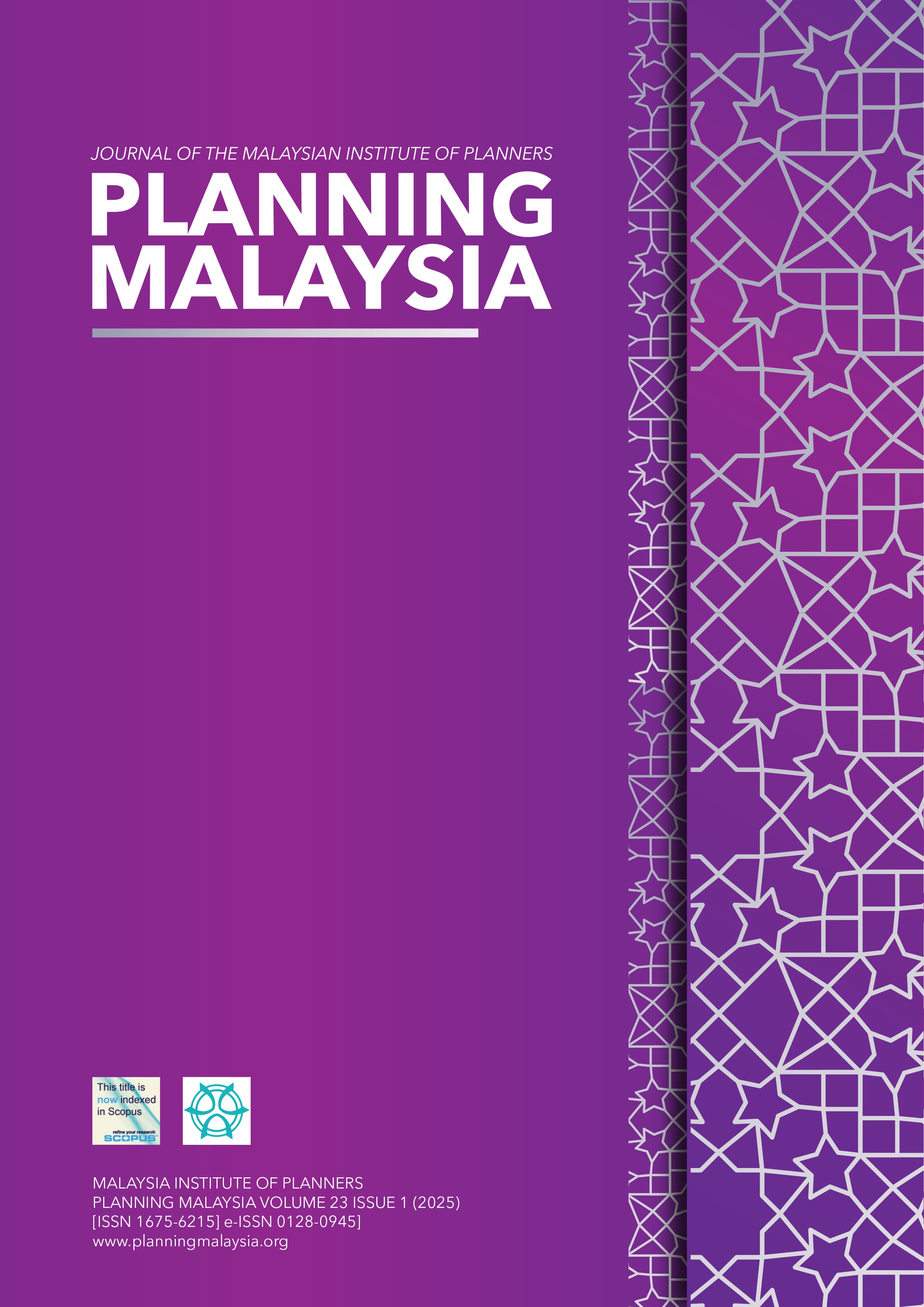THEMATIC EXPLORATION OF THE GASTRONOMY OF ORANG ASLI PAHANG
DOI:
https://doi.org/10.21837/pm.v23i35.1683Keywords:
Intangible Cultural Heritage, Cultural Gastronomy, Orang Asli PahangAbstract
The Orang Asli Pahang commemorate their cultural heritage with vibrant cultural gastronomies. These gastronomies, embodying the spirit of community, culture, and nature, are integral to preserving ancestral customs and fostering social cohesion. This study thematize the intricacies of the gastronomy to better understand the inspiration, interrelationships with other domains of cultural heritages and other specifics involved the gastronomy. Purpose: The primary objectives are (i) to document the cultural gastronomy of Orang Asli Pahang, and (ii) to assign themes to the cultural gastronomy widely applicable to all tribes of the Orang Asli in Pahang. Method: Qualitative research method is employed to explore, document and thematize the cultural gastronomies of Orang Asli Pahang. Such methods include content analysis, semi-structured interviews, and thematic analysis. Findings: There exists a rich tapestry of cultural gastronomy that interrelate with other domains of cultural heritage. Cultural gastronomy of the Orang Asli is often inspired by the immediate environment and its natural resources. Indigenous communities often base their cuisine on local plants, animals, and landscapes. This close connection to the environment affects ingredient selection and generations-old hunting, gathering, and preparation methods. Concerning all tribes of Orang Asli Pahang, the cultural gastronomy is thematized under foraging approaches, raw cooking ingredients and name of dish and dish preparation.
Downloads
References
Abdillah, F., Leewellyn, V., & Yadisaputra, M. (2020). Local community life satisfaction at early-stage tourist destination. E-Journal of Tourism, 7(2), 177-192. DOI: https://doi.org/10.24922/eot.v7i2.60515
Abu Bakar, A., Mohamed Osman, M., Bachok, S., & Ibrahim, M. (2014). Analysis on community involvement in cultural activities: Transmission of ethnic language. Planning Malaysia, 12(4). https://doi.org/10.21837/pm.v12i4.127 DOI: https://doi.org/10.21837/pmjournal.v12.i4.127
Amir, S., Osman, M.M., Bachok. S., Ibrahim. M. & Zen, I. (2017). Community-based tourism in Melaka UNESCO World Heritage Area: A success in food and beverage sector? Planning Malaysia, 15(1), 89-108. DOI: https://doi.org/10.21837/pmjournal.v15.i6.225
Arana, C. D. P., & Zúñiga, E. M. (2022). How to define gastronomic identity from Cultural Studies: The Peruvian case. International Journal of Gastronomy and Food Science, 27, 100476. DOI: https://doi.org/10.1016/j.ijgfs.2022.100476
Anuar, S.N., Mohd Salim, J., Nikong, D., Ab Manaf, N., Sanusi, N.A., Omar, K. & Tengku Mohamad, T.R. (2023). Traditional ecological knowledge of wild tubers used by the orang asli Bateq tribe on the east coast of Peninsular Malaysia. Malaysian Applied Biology, 52(5), 1-10. https://doi.org/10.55230/mabjournal.v52i5.co6 DOI: https://doi.org/10.55230/mabjournal.v52i5.co6
Mohanty, P. P., Rout, H. B., & Sadual, S. K. (2020). Food, culture and tourism: a gastronomy trilogy enhancing destination marketing, case study of Odisha, India. International Journal of Tourism and Hospitality in Asia Pasific (IJTHAP), 3(1), 15-30. DOI: https://doi.org/10.32535/ijthap.v3i1.721
Manaf, N. A. S., Omar, K., & Mohamad, T. R. T. (2022). Traditional ecological knowledge of Orang Asli in Malaysia: The utilization of plant tubers as food resources. In e-Proceeding 2nd International Scientific Conference on Indigenous Crops (p. 54).
Monova-Zheleva, M., Zhelev, Y., & Nikolova, E. (2020). Intangible cultural heritage presentation and preservation–Challenges and opportunities for museum specialists. Digital Presentation and Preservation of Cultural and Scientific Heritage, 10, 233-240. DOI: https://doi.org/10.55630/dipp.2020.10.19
Rojas-Rivas, E., Rendón-Domínguez, A., Felipe-Salinas, J. A., & Cuffia, F. (2020). Koerich, G. H., & Müller, S. G. (2022). Gastronomy knowledge in the socio-cultural context of transformations. International Journal of Gastronomy and Food Science, 29, 100581. DOI: https://doi.org/10.1016/j.ijgfs.2022.100581
Downloads
Published
How to Cite
Issue
Section
License

This work is licensed under a Creative Commons Attribution-NonCommercial-NoDerivatives 3.0 Unported License.
Copyright & Creative Commons Licence
eISSN: 0128-0945 © Year. The Authors. Published for Malaysia Institute of Planners. This is an open-access article under the CC BY-NC-ND license.
The authors hold the copyright without restrictions and also retain publishing rights without restrictions.


